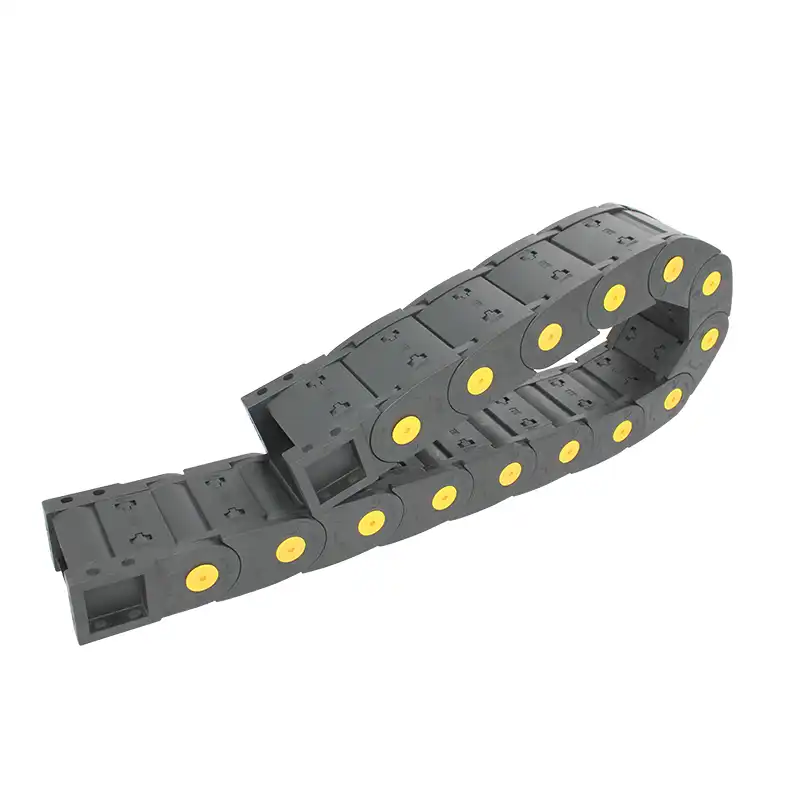Effective Solutions for Managing and Protecting Electrical Cables in Various Applications
Understanding Electrical Cable Carriers Importance and Application
In the world of electrical engineering and construction, the proper management and organization of cables are paramount. This leads us to the topic of electrical cable carriers, which play a crucial role in the effective handling of electrical wires and cables. An electrical cable carrier, often referred to as a cable drag chain, is designed to protect and guide flexible cables and hoses as they move along with machinery and equipment.
The Structure of Electrical Cable Carriers
Electrical cable carriers typically consist of interlinked plastic or metal links that can flex and bend as needed. They come in various shapes and sizes, allowing for versatility in applications. The design usually features a wide internal space to accommodate different types of cables while minimizing friction and wear. Notably, the open structure allows for easy access, enabling quick cable changes or repairs without the need for disassembly.
Benefits of Using Electrical Cable Carriers
1. Enhanced Organization One of the primary advantages of electrical cable carriers is that they help keep cables organized and out of harm's way. By containing multiple cables within a single carrier, they reduce clutter and prevent tangling, which can lead to damage or wear over time.
2. Protection Cable carriers offer a protective environment for cables, shielding them from dust, debris, and mechanical impacts. This protection extends the lifespan of the cables, reducing the likelihood of downtime due to cable failures.
3. Flexibility and Motion These carriers allow for smooth motion as they guide flexible cables in various directional movements. They are especially useful in applications with repetitive motion, such as robotic arms or automated manufacturing lines, where the carrier ensures the cables remain functional despite constant bending and flexing.
4. Ease of Installation and Maintenance Electrical cable carriers simplify the installation process by providing a systematic way to route cables. Additionally, they enable easier maintenance, as technicians can quickly and efficiently diagnose and replace faulty cables without major disruptions to surrounding systems.
Applications in Various Industries
Electrical cable carriers find applications across a wide range of industries
- Manufacturing In automated production lines, these carriers are essential for managing the cables of robotic arms and conveyor systems. They ensure that power and data cables are well-organized and protected from mechanical stresses.
electrical cable carrier

- Construction On construction sites, electrical cable carriers can be crucial for handling the extensive wiring associated with heavy machinery and temporary power setups.
- Telecommunication In telecommunications, they support the routing of multiple cables between equipment, preventing electromagnetic interference and improving signal quality.
- Aerospace In the aerospace sector, these carriers help manage wiring in aircraft, ensuring safety and compliance with strict regulations regarding cable management.
Choosing the Right Cable Carrier
When selecting an electrical cable carrier, several factors must be considered
- Compatibility Ensure the carrier can accommodate the size and number of cables required for your application.
- Material Different environments may require carriers made from specific materials. For example, in environments exposed to harsh chemicals, a more durable plastic or metal may be necessary.
- Bending Radius The bending radius must match the application to prevent cable damage. A tighter radius may restrict movement, while a larger radius can provide more flexibility.
- Load Capacity It's essential to evaluate the weight of the cables and ensure the carrier can support this load without compromising integrity or performance.
Conclusion
In summary, electrical cable carriers are indispensable tools in managing and protecting electrical cables across various industries. Their ability to enhance organization, offer protection, and facilitate movement makes them a fundamental component of modern electrical and robotic applications. As industries continue to evolve, the design and application of electrical cable carriers will likely advance, meeting the ever-growing demands of technology with efficiency and reliability.








